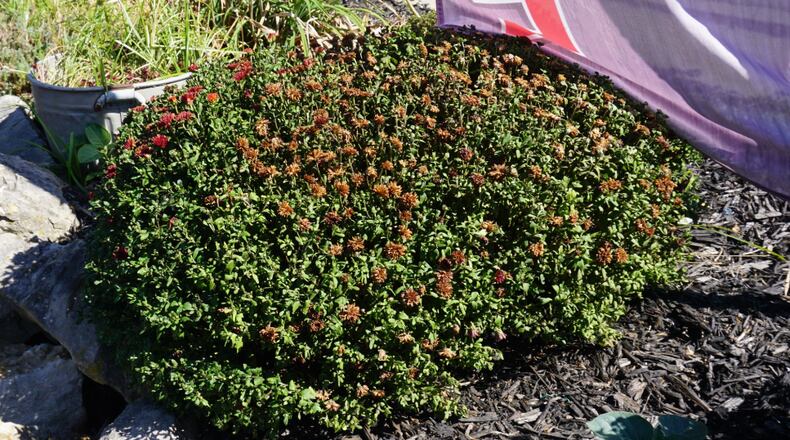Therefore, watering your landscape plants and lawn is essential to keep plants alive and thriving into next year. Plants going into the winter stressed are more likely to have problems surviving cold temperatures.
Many of our deciduous trees have already started to shed leaves prematurely. This is typical when it’s dry. The plants don’t have enough water to continue with photosynthesis, so they start jettisoning some of their leaves.
This is noticeable in some plants more than others. For instance, buckeyes, cottonwood, honeylocust and others have already dropped leaves like they would in October. For other species, it’s not as noticeable.
For those trees that are planted in poor sites such as parking lot islands, street trees, and compacted clay soils, you may also see symptoms of leaf scorch, which is considered an abiotic or non-living disease.
Leaf scorch shows up on the outer margin of the leaves and has an even pattern around the complete margin of the leaf. Almost all leaves are affected. The browning and yellowing may eventually consume the entire leaf. I have seen maples in parking lot islands with tremendous leaf scorch.
Larger and established trees will survive this, though some may show symptoms of branch dieback next season. Shallow-rooted and newly established trees or those planted within the last five years, if not watered, will likely show branch dieback in 2025.
Young and shallow-rooted trees and shrubs that fit into the above category should be watered to prevent dieback. When watering, lay the hose around the base of the tree or shrub and let the water trickle.
I usually let it trickle for at least an hour and then check the plant (dig gently into the soil at the outside edge of the canopy) to see the depth of water penetration. The idea is to thoroughly soak the plant when watering.
If you thoroughly soak the plant and add mulch on top of bare soil, you will provide moisture for a longer period.
Herbaceous plants are beginning to show top dieback but don’t forget the roots are still living. Give them a good soaking as well.
Finally, if you haven’t had water on your lawn in the last three weeks, provide an inch of irrigation to saturate the crowns and keep them alive. They will come out of dormancy once this drought clears up.
Pamela Corle-Bennett is the state master gardener volunteer coordinator and horticulture educator for Ohio State University Extension. Contact her by email at bennett.27@osu.edu.
About the Author


